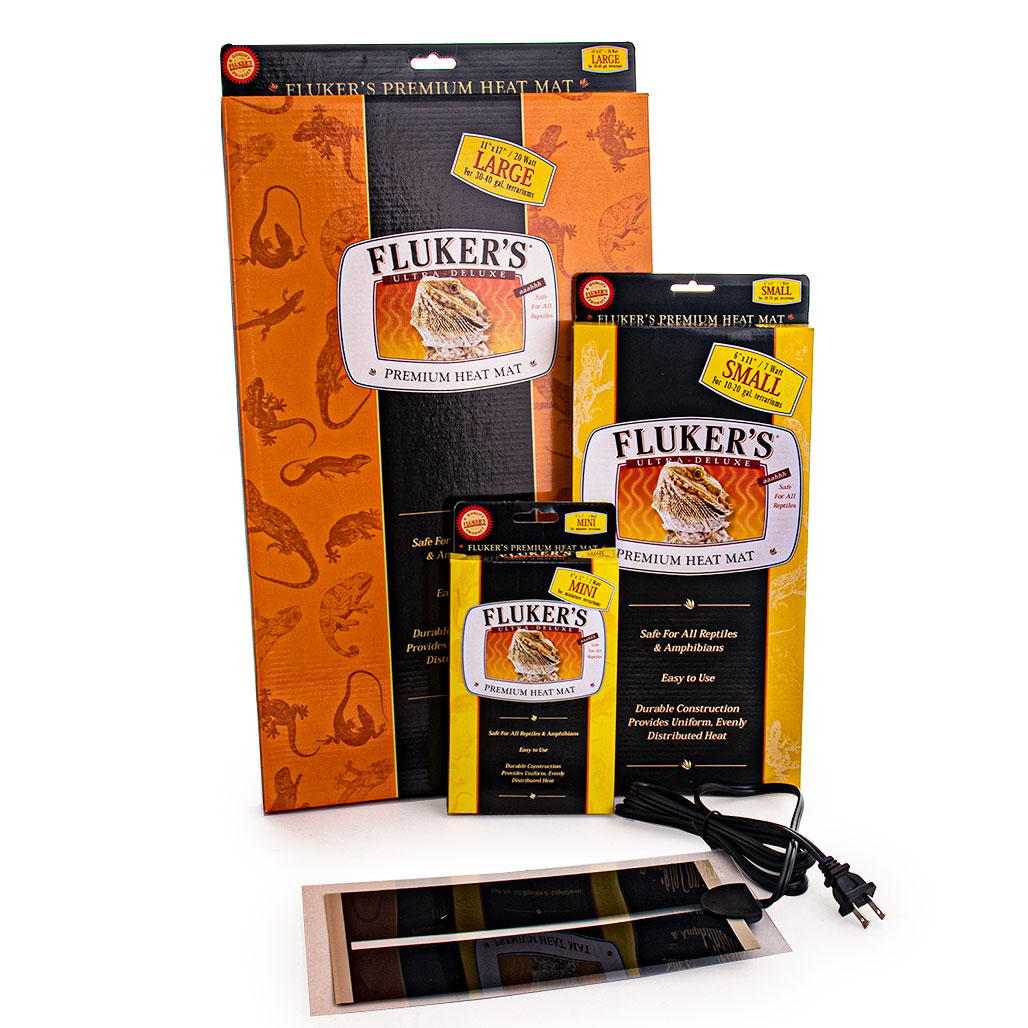Prepping for Cooler Temperatures for Your Reptile
Posted by The Fluker's Team on Jan 21st 2025
Adjusting Lighting and Heating for Reptiles in Winter
As temperatures drop in winter, it is important to keep your reptile's habitat comfortable and healthy. Proper lighting and heating adjustments are essential for maintaining the right environment for your cold-blooded companions.
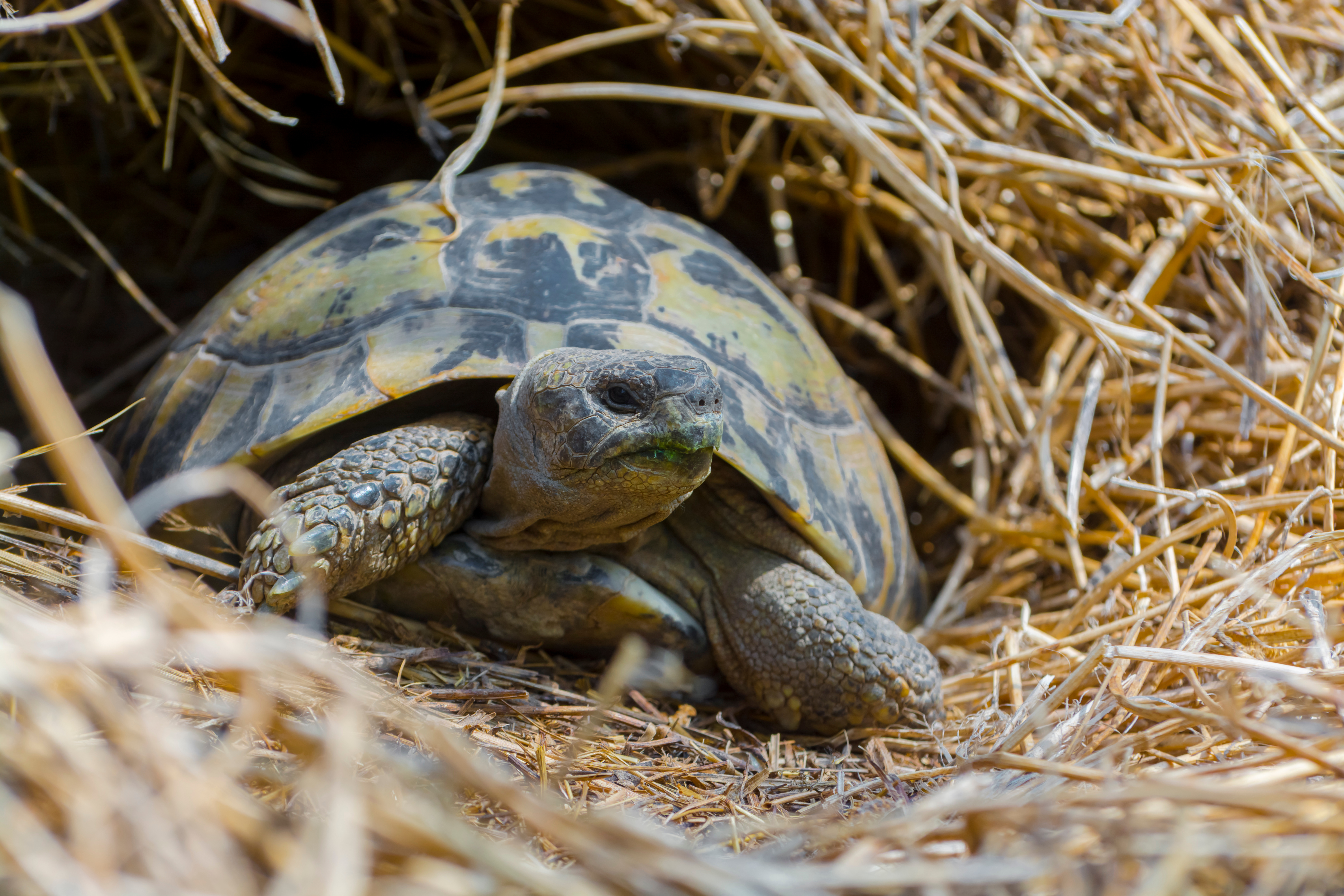
Here are some key considerations to keep in mind:
1. Understanding Your Reptile's Needs
You will need to examine and study your specific pet's needs to properly care for them in the winter. Here are some tips and guidance on how to understand exactly what your pet's needs are:
Research Species Requirements: Different reptiles have unique temperature and lighting needs based on their natural habitats. Look up the specific requirements for your reptile species and their enclosure to ensure you provide the right conditions.
Consult Experts: Contact veterinarians or reptile care specialists for advice on the best heating and lighting for your reptile. We don't recommend googling or using Wikipedia; this may lead you to wrong information.
- Join a FB group with experienced hobbyist and speak with the moderators when you have a question.
- Look at trusted manufacturers' websites for care sheets or helpful links. Ensure that science or veterinarian advice backs up their data.
- Talk with your local veterinarian
- Join online forums, read books, or attend workshops to learn more about proper care and husbandry. The more you know, the better equipped you'll be to provide a happy and healthy life for your pet.
Adjust as Needed: Be prepared to make adjustments based on your observations and the specific needs of your reptile. If you have cared for your reptile for a while, you will notice changes in their behavior. You will know when something is not right. Caring for a reptile can be remarkably similar to the ways you care for and understand a child.
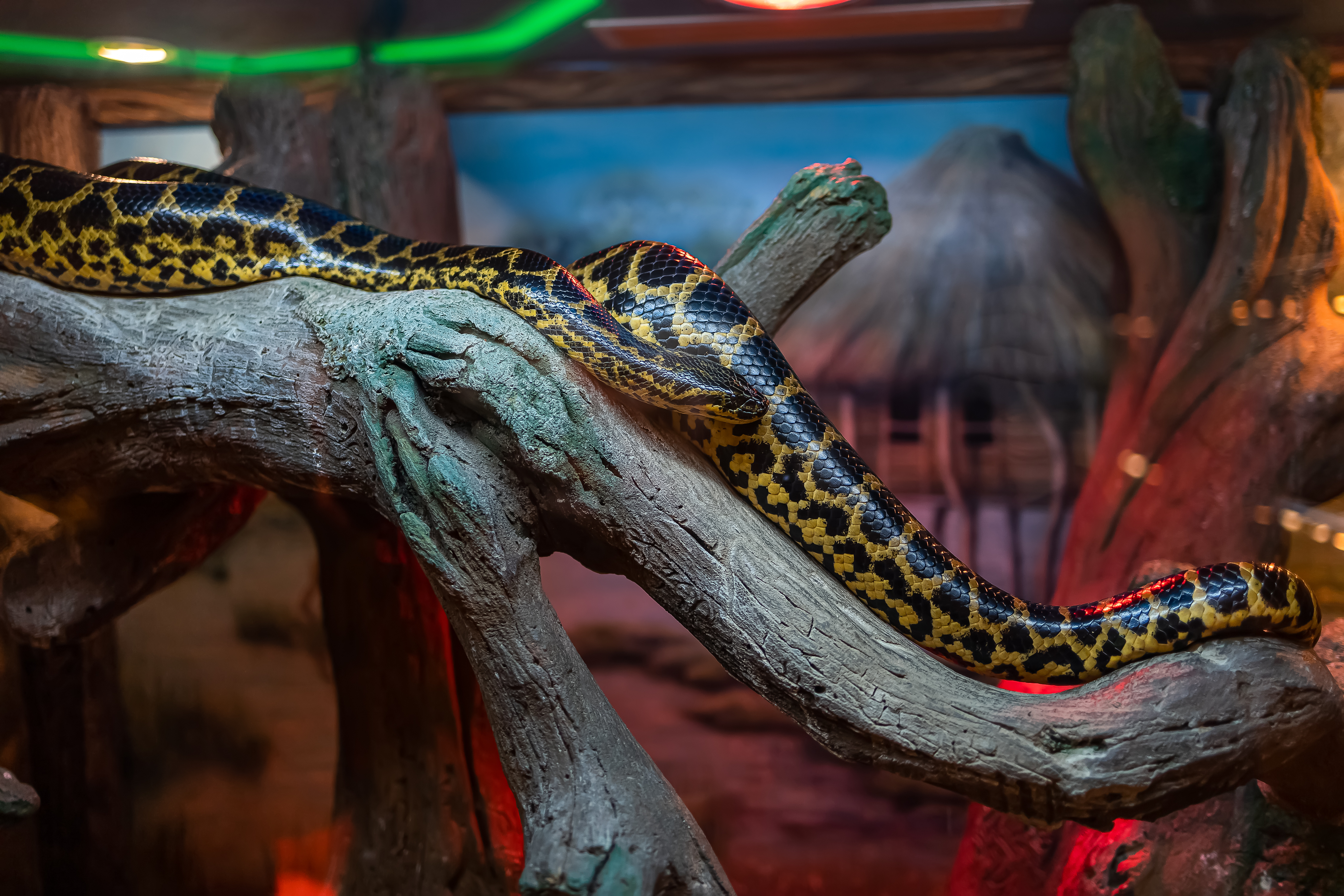
2. Adjusting Heat Sources
Many types of reptiles have adapted to environments with natural temperature changes. These changes happen daily and seasonally.
For some of these reptiles, a drop in nighttime temperatures is crucial for triggering normal breeding behaviors. This temperature change mimics their natural habitat. Cooler nights signal the start of breeding season. This encourages activities like courtship and mating.
During winter, the ambient temperature in your home may decrease, affecting your reptile's enclosure. Reptiles are ectotherms, or "cold-blooded" animals. They rely on the temperature around them to control their body heat.
If the environmental temperature in your terrarium is inadequate, your pet may be susceptible to digestive problems or infections. Here are some tips for adjusting heat sources:
- Increase Heat Output: If you use heat lamps or ceramic heaters, try using higher wattage. You can also add another heat source to keep the basking temperature steady.
- Heat lamps radiate infrared heat but emit no light. These lights provide direct heat to your basking area instead of bright, blinding light. They are perfect for reptiles or amphibians.
- Use a Timer: To help achieve important temperature drops in a controlled space, you can use a regular light timer. You can find these timers at most hardware stores and also in some pet specialty retailers. These timers help automate the on and off cycles of electrical devices. They are great for managing heating elements in a reptile enclosure.
- Set the timer to turn off the heat emitter at night. This will lower the temperature in the enclosure.
- It simulates the cooler nighttime conditions that many reptiles feel in the wild. This helps encourage natural breeding behaviors. It also improves the reptiles' well-being by creating a more real and stress-free environment.
- In the morning, you can set the timer to turn the heat emitter back on. This will slowly raise the temperature, like the sun warming the day.
- Creating a natural environment is important for your reptiles' health and well-being. It helps them show natural behaviors that are vital for their reproduction and quality of life. Using a simple light timer helps you create natural conditions. This way, your reptiles can thrive in captivity.
- Use Thermostats: Invest in thermostats to regulate the temperature automatically. This will help prevent overheating and ensure a stable environment.
- Check for Cold Spots: Regularly monitor the enclosure for cold spots, especially during the night when temperatures drop. Use heat mats or additional basking spots if necessary.
3. Monitor Humidity Levels
Winter heating can lead to dry air, which may affect your reptile's health. Keeping the right humidity is important for your reptile's health. Here are some strategies to keep humidity levels in check:
Use a Hygrometer: Invest in a hygrometer to accurately measure the humidity in your reptile's enclosure. This will help you determine if you need to make adjustments.
Fluker's relative humidity hygrometer helps you keep a steady level of humidity in your pet's enclosure. This creates a safe and comfortable environment for your pet. Reptiles and amphibians need humidity to stay hydrated.
Amphibians: Temperate amphibians typically require a relative humidity of 80-90% and tropical species 85-95%.
Reptiles: Desert reptiles typically require a relative humidity of 40-60%, temperate species 60-75% and tropical species 80-90%.
Add a Water Dish: Providing a shallow water dish can also help maintain humidity. As the water evaporates, it will increase the moisture in the air. Make sure to change the water daily to keep it clean and fresh.
Use Substrate Wisely: Choose a substrate that retains moisture well, such as coconut fiber or sphagnum moss, depending on your type of pet. These materials can keep the humidity levels stable while also providing a comfortable environment for your reptile.
Seal the Enclosure: Ensure that your terrarium is properly sealed to prevent humidity from escaping. Check for any gaps or cracks and seal them if necessary. This will help maintain a consistent environment for your pet.
Humidity Hides: Create a humidity hide by placing damp moss or substrate inside a hide box. This gives your reptile a moist retreat, which is especially beneficial during shedding.
Mist the Enclosure: Regularly misting the inside of the terrarium can help increase humidity levels. Use a spray bottle to lightly mist the substrate and any plants or decorations. Be careful not to overdo it, as too much moisture can lead to mold growth or respiratory issues.
Monitor Temperature and Humidity Together: Keep an eye on both temperature and humidity levels simultaneously. This will give you a better understanding of your reptile's environment and allow you to make adjustments as needed.
Fluker's Digital Thermometer/Hygrometer measures humidity and temperature. It helps keep consistent levels in your pet's enclosure. This creates a safe and comfortable environment for your pet.
Environmental temperature and humidity are arguably the two most important factors in properly maintaining reptiles and amphibians in captivity. Fluker's offers a handy multi-pack of thermometers and hygrometers. This helps pet owners create safer, healthier, and more comfortable spaces for their pets.
Humidity levels may vary, depending on your type of animal.
Amphibians:
Temperate amphibians typically require a relative humidity of 80-90% and tropical species 85-95%.
Reptiles:
Desert reptiles typically require a relative humidity of 40-60%, temperate species 60-75% and tropical species 80-90%.
By using these tips, you can make a healthy and comfortable home for your reptiles and amphibians. This will help them thrive during the colder months. Remember, a well-maintained environment is key to their overall well-being.
4. Provide Proper Lighting
In addition to heat, proper lighting is essential for your reptile's well-being. Here are some tips for ensuring your reptile gets the right light exposure:
UVB Lighting: Make sure your reptile has access to UVB lighting, which is vital for calcium absorption and overall health. Replace bulbs every 6-12 months, as their effectiveness diminishes over time.
Light Cycle: Maintain a consistent light cycle, mimicking natural day and night patterns. This helps regulate your reptile's circadian rhythm and promotes healthy behaviors.
Use Full-Spectrum Bulbs: Full-spectrum bulbs provide both UVB and UVA light, which can enhance your reptile's overall well-being.
The key to a good and safe UVB bulb is to provide the right amount of UVB radiation. This should be in the 290-310 nm range. At the same time, it is important to keep UVA levels within safe limits. Engineers designed and tested Fluker's Sun Glow Coil Bulbs to ensure they perform within these parameters.
UVB radiation is important for reptiles and amphibians in captivity. It helps produce vitamin D. This can prevent or reverse metabolic bone disease. The proper amount of UVA is also essential as it helps increase activity levels, reproduction levels, and appetite.
Fluker's 10.0 UVB fluorescent bulbs are perfect for daytime animals. This includes bearded dragons, monitors, tegus, uromastyx, and other desert species. Recent research also suggests that crepuscular and nocturnal species (active during twilight and nighttime) benefit from UVB radiation. This lamp can also serve as an important stimulant to live plants in vivariums and terrariums.
The sun produces three primary types of light: ultraviolet, visible, and infrared. Ultraviolet (UV) light helps in regulating behavior and stimulating Vitamin D production in reptiles. Visible light is the spectrum of light that allows humans and animals to see within our environment.
Fluker's 5.0 UVB and 10.0 UVB Sun Glow Coil Bulbs produce UV and visible light. Use them with Fluker's incandescent light bulbs to imitate natural sunlight.
Combine UVA and UVB light with Incandescent lighting. Fluker's incandescent light bulbs give reptiles the radiant heat they need.
Reptiles are ectothermic and depend on their environmental temperature to regulate their core body temperature. If you do not give a reptile the right temperature range, it may get chronic infections.
Positioning: Place lights at the appropriate distance from the basking area to avoid burns while still providing adequate light. ETRs (Environmental temperature ranges) vary between different species. Ask your pet professional or check available literature for help in finding the right ETR for your pet.
Fluker's has created a simple reference table. This table helps you choose the right Fluker's bulbs based on how far they are from the reptile.
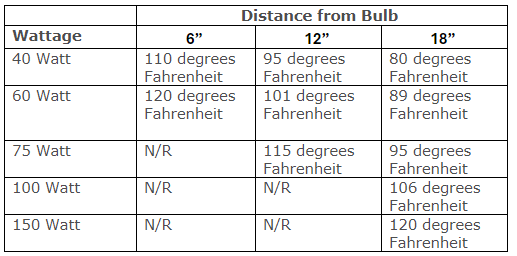
*Temperatures average at specified distances; may vary based on size or type of enclosure. All testing performed at 68 degrees Fahrenheit room temperature. N/R: Not Recommended for reptile exposure.
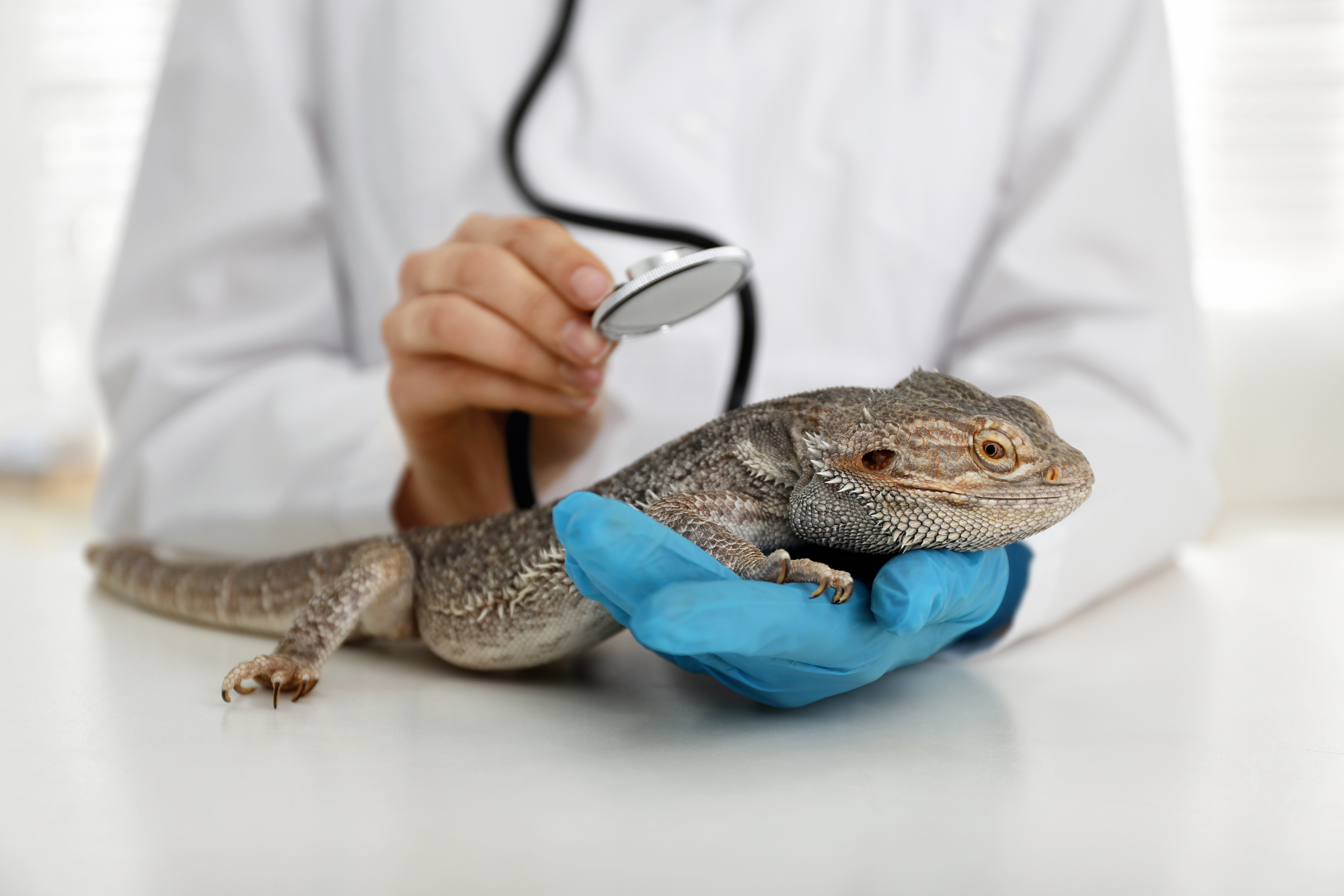
5. Regular Health Checks & Maintenance
Regular Health Checks: It's essential to monitor your pet's health regularly. Look for signs of stress or illness, such as changes in appetite, lethargy, or unusual behavior. If you notice anything concerning, consult your veterinarian, who specializes in reptiles, for advice and treatment options.
Winter can be a challenging time for reptiles, so regular health checks are essential. Here’s what to look for:
- Behavior: Monitor your reptile's activity levels. If they become lethargic or stop eating, it may indicate a problem.
- Skin and Eyes: Check for any signs of shedding issues, skin lesions, infections, or eye problems. These can be indicators of stress or illness.
- Weight: Weigh your reptile regularly to ensure they are maintaining a healthy weight. Sudden weight loss can be a sign of health issues.
Proper Nutrition: Just like in Spring, Summer, and Fall, a balanced diet is important for your reptile's health. Look into the dietary needs of your species. Because of the difficulty of shipping live insects during winter months, some reptile keepers supplement with commercial diets.
Think about adding vitamins and minerals to their diet as well. This will help support their overall health.
Hydration: Access to clean, fresh water is vital for your reptile. Depending on the species, they may prefer a shallow dish for drinking or a more humid environment for soaking. Regularly change the water to keep it clean and free from contaminants.
Enclosure Maintenance: Keeping your reptile's habitat clean is essential for their health. Regularly remove waste, uneaten food, and any debris from the enclosure. Clean the surfaces with reptile-safe disinfectants to prevent the growth of harmful bacteria. Ensure that the substrate is appropriate for your species and replace it as needed to maintain a healthy environment.
Social Interaction: Many reptiles benefit from gentle handling and social interaction. Spend time observing and interacting with your pet to build trust and reduce stress. However, be mindful of their comfort level and avoid excessive handling, especially during shedding or other vulnerable times.
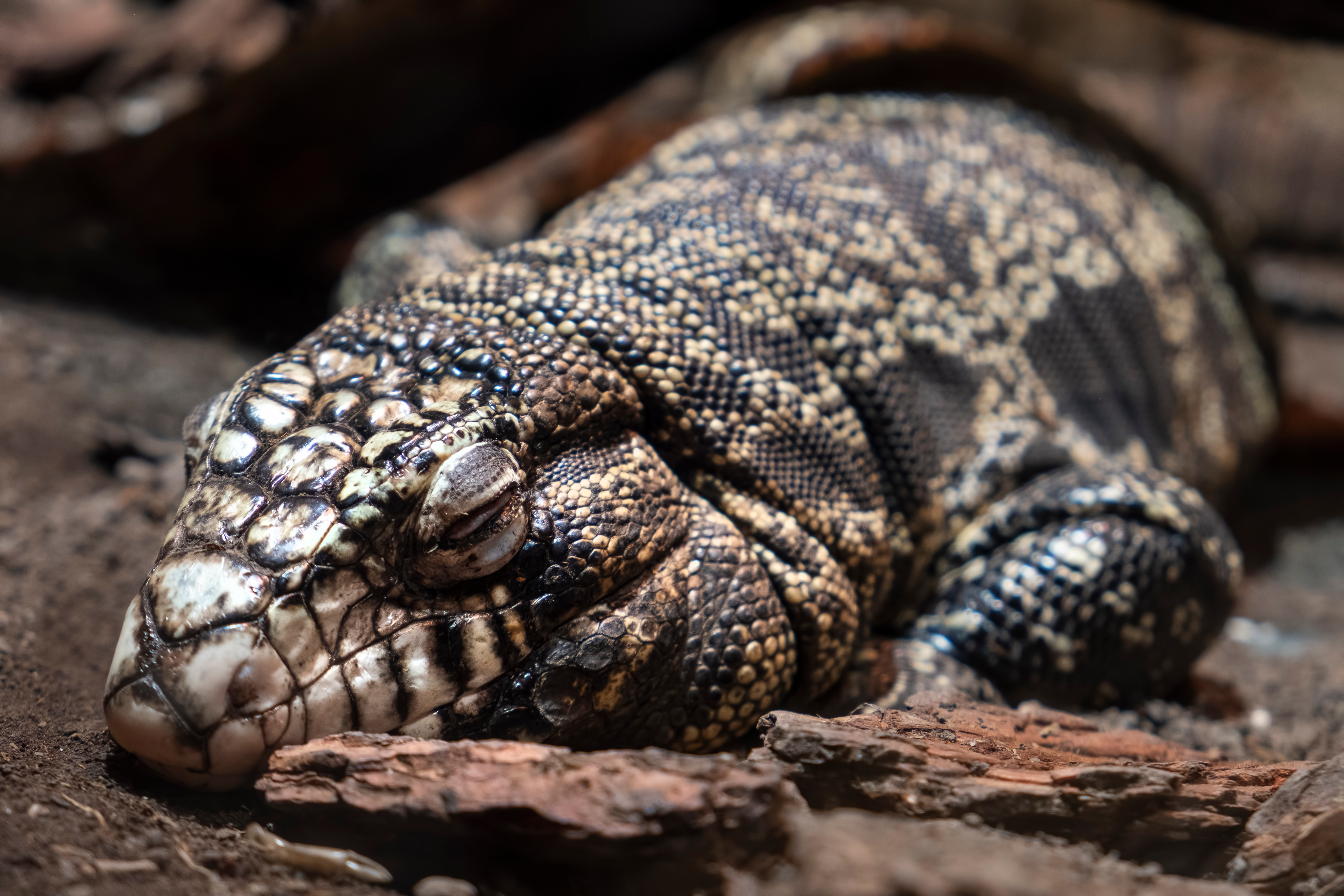
Understanding Brumation
Reptile brumation is a time when some reptiles rest. They do this when temperatures drop and days get shorter, usually in winter. During brumation, reptiles become less active, their metabolism slows down, and they may not eat as frequently. This natural process allows them to conserve energy and survive in conditions where food is scarce.
Understanding brumation can help you care for your reptile in the colder months. This knowledge ensures their comfort and well-being.
How do I know if my reptile is entering brumation?
- Decreased Activity: Your reptile may become less active, spending more time in hiding or resting.
- Reduced Appetite: A noticeable decrease in food intake is common as reptiles prepare for brumation.
- Temperature Preference: They may seek cooler areas of their enclosure, indicating a natural response to seasonal changes.
- Behavioral Changes: You might observe changes in behavior, such as increased lethargy or a desire to burrow or hide.
- Longer Sleep Cycles: Your reptile may sleep more than usual, reflecting their body's natural rhythm during this period.
By monitoring these signs, you can better understand if your reptile is entering brumation. Additionally, ensuring that their habitat is suitable for this process is crucial for their health and well-being. These tips will also help them emerge healthy and ready for the warmer months.
How long does brumation last?
Brumation for reptiles usually lasts from a few weeks to several months. This depends on the species and the environment. However, some reptiles may brumate longer if the temperatures stay low.
Conclusion
In conclusion, changing the heating and lighting in your reptile's terrarium during winter is key. This helps keep them healthy and happy. By understanding your reptile's specific needs, you can make informed decisions about heat sources and lighting adjustments.
Remember to increase heat output, utilize thermostats, and monitor for cold spots to create a stable environment. Additionally, ensure your reptile has access to UVB lighting and consider extending light cycles to mimic natural conditions.
Regularly check humidity levels and observe your reptile's behavior to catch any signs of stress early. By following these steps, you can create a cozy home for your reptile. This will help support its natural behaviors and health during the colder months.


